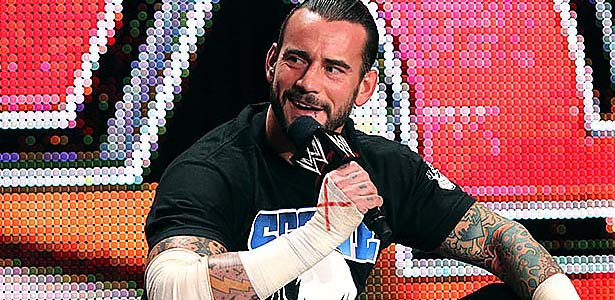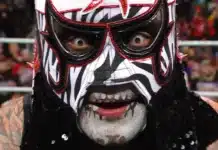
I saw “Pipe Bomb” trending on Twitter, and in a prime example of the cesspool that usually is social media, assumed it was either a reference to a weapon found in the mail or to the wrestling promo. Ironically, last week marked nine years since CM Punk dropped the infamous “pipe bomb” promo on Monday night Raw, generating more main stream press in six and a half minutes on the mic than the industry had in nearly the previous decade. Just a few weeks later, one of the very few legendary nights of the modern era took place when he defeated John Cena in front of a raid hometown crowd of Chicago to win the WWE title.
So, what happened?
It’s easy to say that CM Punk got over despite the office’s best efforts and then management did basically everything they could to squash his momentum. But, a closer examination of “The Summer of Punk” shows just how much WWE dropped the ball in 2011, and more importantly, why they did it.
I’ve written about it many times, but pro wrestling, similar to most things in life, is about timing. The concepts and angles that get over the most do so because the right things happen at the right time because the climate of the industry allowed it to happen organically. The fact is, you can’t manufacture a boom period, and if you could, the industry would’ve never seen it’s more notorious slumps. Prime example, what truly set the stage for Extreme Championship Wrestling to revolutionize the presentation of the industry in the late-90s? The answer is the demand for an alternative based on the cartoonish product in the business of the earlier years of the decade. Fans that shook their head at Norman The Lunatic, TL Hopper, and The Goon, were happy to embrace The Sandman, Tommy Dreamer, and Raven. Ted Turner decided he wanted to go head-to-head with Vince McMahon so the creation of Nitro and the eventual arrival of The Outsiders pushed the WWF toward edgier programming to be able to compete with the rival promotion, and the competition led to the biggest boom in the history of the industry. Again, you can’t manufacture a boom period.
Make no mistake about it, despite any stereotype about his stature or unconventional look, there was a time in the sport that CM Punk was the guy, until he wasn’t. The WWE had spent the few years prior to the pipe bomb as a PG product because of Linda’s unsuccessful bids to get a senate seat. Who knew it only took a six million donation to the Trump campaign to buy her a spot in his cabinet? Similar to the discontent with the product today, the PG era consisted of mostly flat and stale programming. Punk was the spark to shift the direction of the product, generating a more unpredictable atmosphere for the Raw show that utilized a paint-by-numbers approach that lacked any major compelling elements.
The same statement can be made about the product today, but it certainly applied to the status of the organization in 2011 as well. The WWE got too comfortable with their dominate portion of the market and a level of complacency developed within the product. The launch of the WWE Network a few years later further cemented a level of mediocrity because the writing team was no longer pushed to attempt to sell a show that was worth $40 on pay-per-view, but rather the WWE machine could churn out events that only had to meet the standard of the $10 price tag for a subscription, which also included access to thousands of hours of classic footage. With as comfortable as the WWE was with it’s position in 2011, they have even more of a safety net today, as their mega TV deals that started last year will provide them with record-setting revenue for the next five years.
When CM Punk sat on the stage in 2011, he said what many fans were thinking, too often the corporate agenda, not fan demand, dictated the direction of the company. Unfortunately, the same thing can be said today because the WWE corporation serves its stockholders ahead of its fan base. The narrative that saw Punk claim the WWE championship cast him as an updated version of the anti-hero, where he didn’t need to reflect the shock TV that was popular in the late-90s the way that Stone Cold did when he pummeled Vince on a weekly basis, but rather took a rebellion approach to stand up for what he thought was right. It was the same narrative with a different presentation and it worked because wrestling psychology, similar to many other forms of entertainment, is based on human psychology.
In truth, the decline of the summer of Punk was almost as fast as its rise. I’ve said this before on several occasions, when a performer is over, management has to run with it at the right time to get the most out of it, and delaying that decision could miss the boat on making that competitor the biggest star possible. For example, if the WWE decided to wait an extra year to make Stone Cold the top guy during the Attitude era, would he still have been as big of a star? Granted, he still would’ve drawn money, but letting him run with it at the right time was the difference between good business and record-setting business. CM Punk won the WWE title in July and dropped it the next month at Summer Slam when Alberto Del Rio cashed in the money in the bank contract. The month after that Triple H returned to the ring, pinned CM Punk, and hung up his boots again. Sure, Punk won the title again and had a lengthy run with it as a heel in the years that followed, but the point is, the WWE missed the boat to run with him as the top guy that would’ve drawn the main stream to the product again.
Punk’s momentum was squashed for the same reason Daniel Bryan wasn’t given a chance a few years later, because it wasn’t what the office wanted to present at the press conferences for sponsors and stockholders. When you consider the lack of another wrestling boom in the past two decades, both Punk and Daniel Bryan could’ve gotten over with the general public, especially after the “Yes!” chant became popular at sporting events. But, the lack of competition doesn’t push the organization to go with the most over performers so instead the direction of the company is often used to craft its corporate image, which seems to be the top priority for the company. Still, if CM Punk could’ve walked out of WWE in 2011 and onto Nitro, you can bet the WWE actually would’ve ran with him as the top guy because of how he connected with the audience at the time. The fans identified with him and they rallied behind him, which is the key for a main event star. Even nine years later, it’s disappointing to think how management wasted the opportunity and what could’ve happened if Punk truly had the chance to run as the top star, as well as the ripple effect it might’ve had on the industry.
What do you think? Comment below with your thoughts, opinions, feedback and anything else that was raised.
Until next week
-Jim LaMotta







